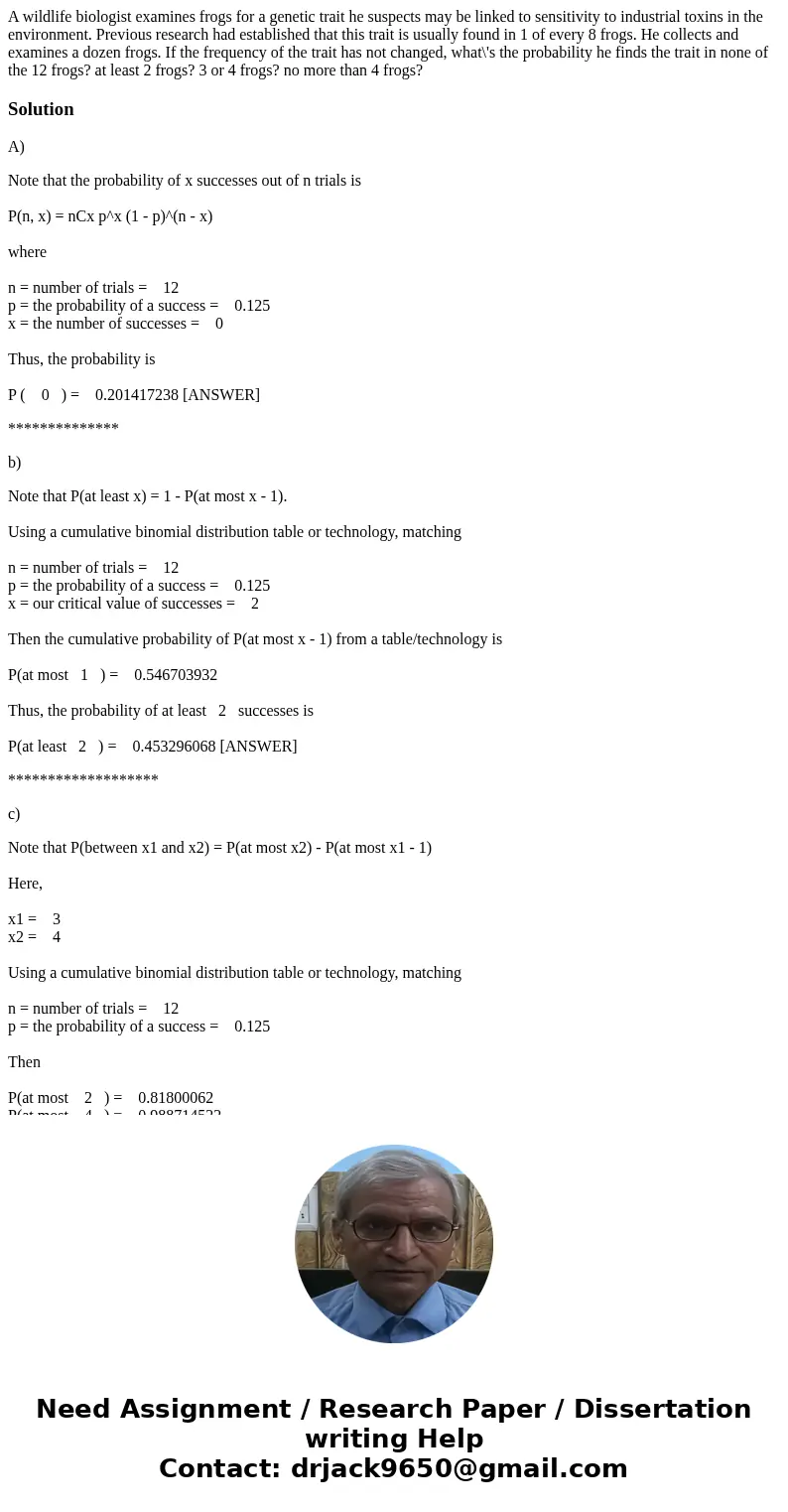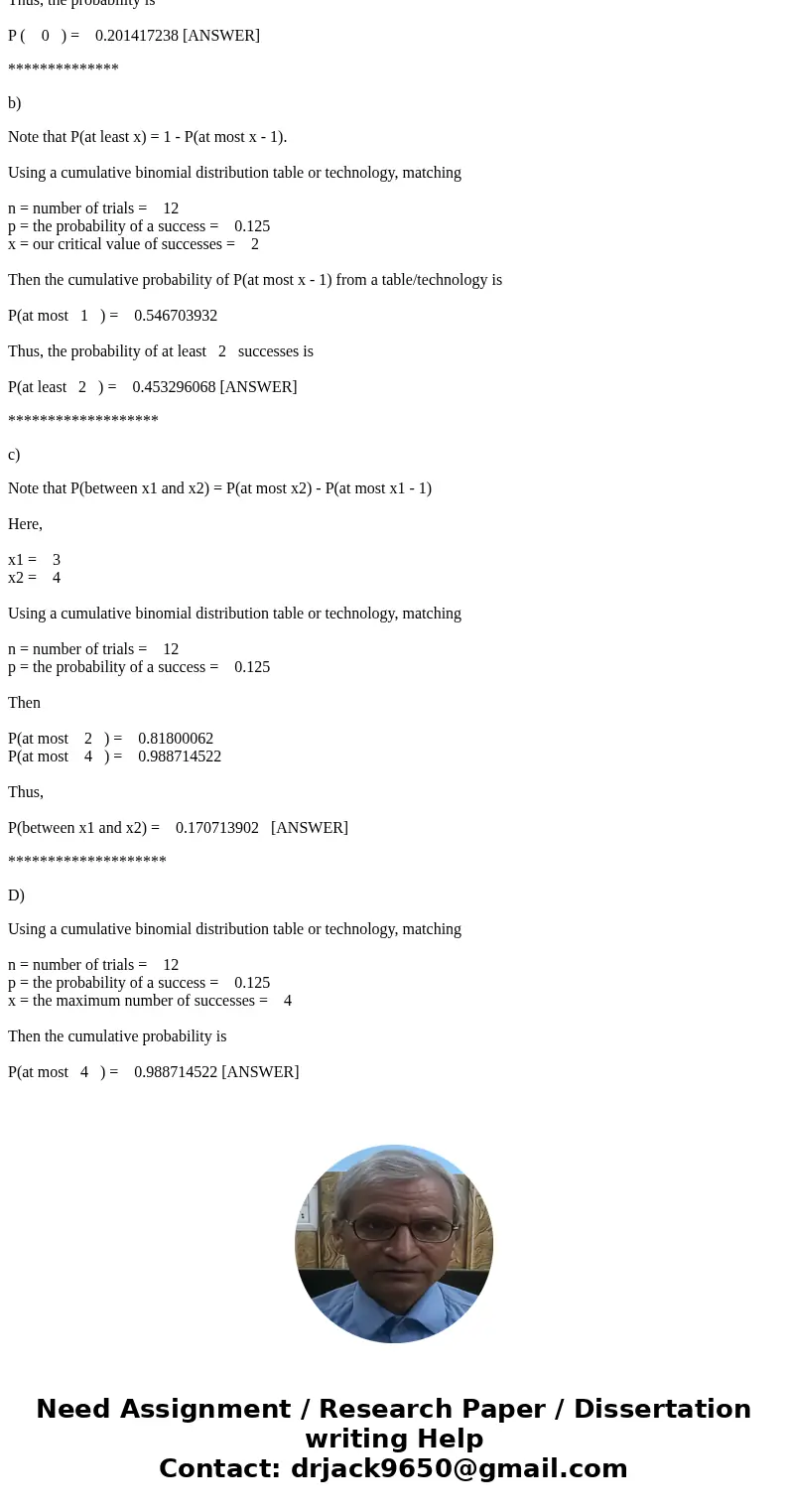A wildlife biologist examines frogs for a genetic trait he s
Solution
A)
Note that the probability of x successes out of n trials is
P(n, x) = nCx p^x (1 - p)^(n - x)
where
n = number of trials = 12
p = the probability of a success = 0.125
x = the number of successes = 0
Thus, the probability is
P ( 0 ) = 0.201417238 [ANSWER]
**************
b)
Note that P(at least x) = 1 - P(at most x - 1).
Using a cumulative binomial distribution table or technology, matching
n = number of trials = 12
p = the probability of a success = 0.125
x = our critical value of successes = 2
Then the cumulative probability of P(at most x - 1) from a table/technology is
P(at most 1 ) = 0.546703932
Thus, the probability of at least 2 successes is
P(at least 2 ) = 0.453296068 [ANSWER]
*******************
c)
Note that P(between x1 and x2) = P(at most x2) - P(at most x1 - 1)
Here,
x1 = 3
x2 = 4
Using a cumulative binomial distribution table or technology, matching
n = number of trials = 12
p = the probability of a success = 0.125
Then
P(at most 2 ) = 0.81800062
P(at most 4 ) = 0.988714522
Thus,
P(between x1 and x2) = 0.170713902 [ANSWER]
********************
D)
Using a cumulative binomial distribution table or technology, matching
n = number of trials = 12
p = the probability of a success = 0.125
x = the maximum number of successes = 4
Then the cumulative probability is
P(at most 4 ) = 0.988714522 [ANSWER]


 Homework Sourse
Homework Sourse